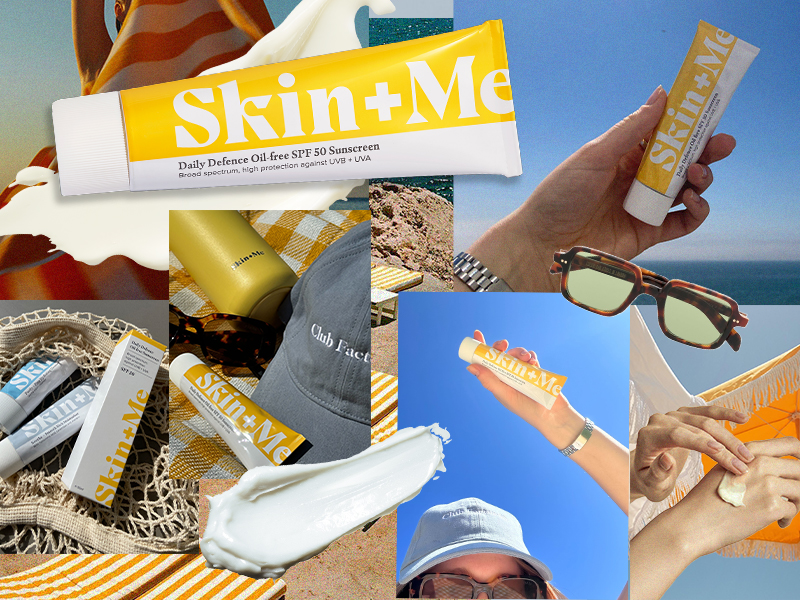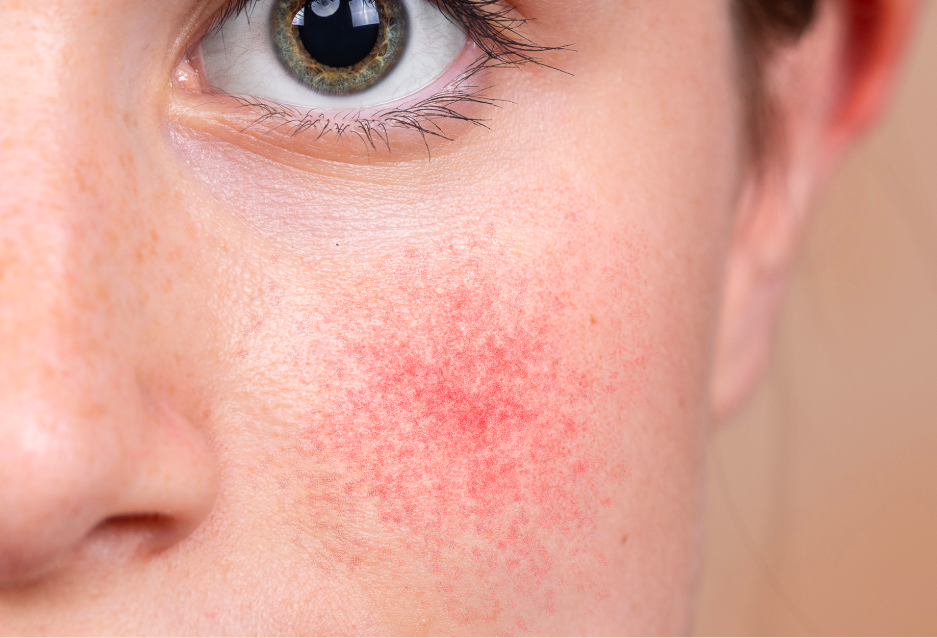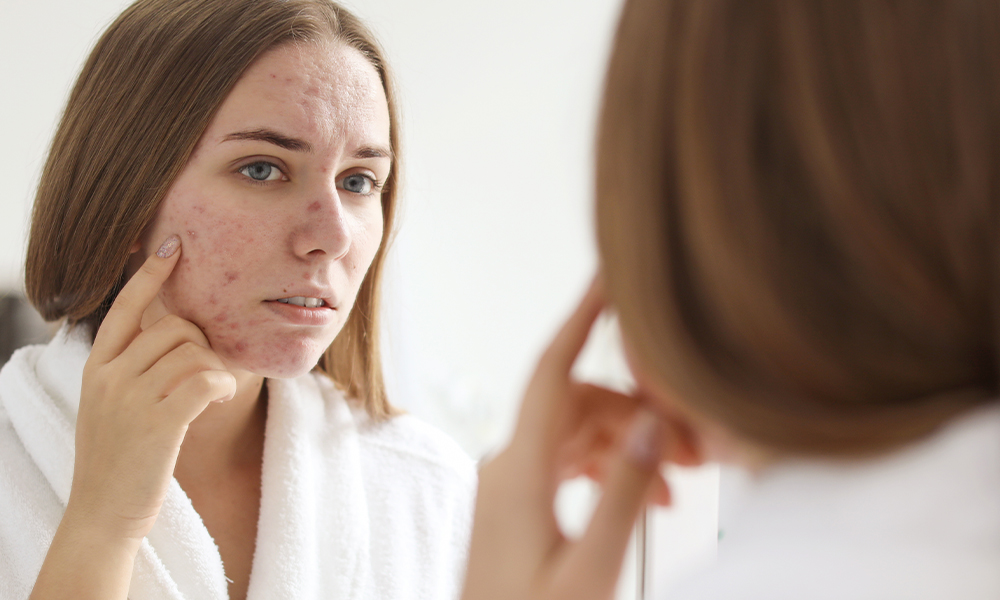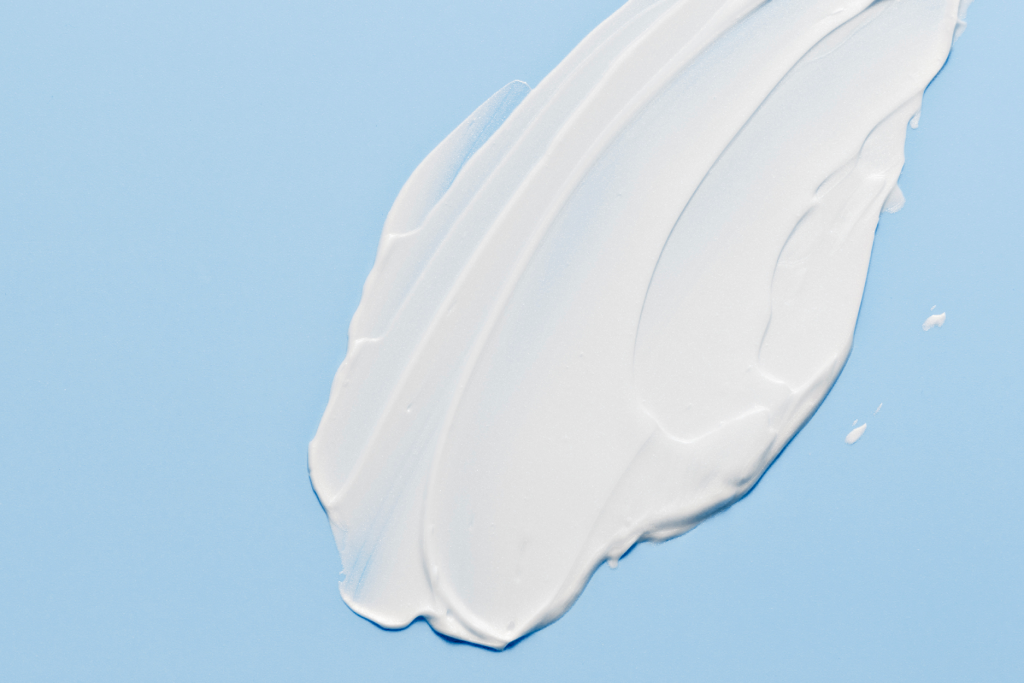Rosacea Awareness Month: Five Things to Know About Rosacea

Link to share article here:
8 Tips For Using Sunscreen On Holiday
Nothing ruins a great holiday quite like sunburn. The tell-tale lobster glow after a day at the beach isn’t a great look, and then the peeling starts. Add in the painful tingling sensation, and the worry about damaging your skin, and you always end up wishing you could turn back the clock and make things right.
Sunscreen is essential for everyone, all year round, but if you’re going to be out in the sun on holiday then you need to be extra careful. So, here are our dermatologist-approved tips for keeping your skin safe when the mercury rises – tick them off, then go outside to (safely) catch some rays.
1. Pick your protection with care
Sunscreen, moisturiser, foundation – you could be forgiven for thinking that any product with an SPF label on it will provide protection. However, things aren’t quite that simple, as our Head of Medical at Skin + Me explains. “It’s usually best to apply a dedicated sunscreen rather than a moisturiser with SPF,” says Dr Jason Thomson.
“There are a few reasons why. The issue around moisturisers or foundations with SPF is that they often don’t have a very high SPF – you’ll often see them with SPF 15 which isn’t high enough. Also they are often not broad spectrum (so you’re not getting protected against damaging UVA). People also generally tend to apply less moisturiser than sunscreen and will also be less likely to reapply throughout the day so overall the chances are you’re going to be getting less protection than with a dedicated sunscreen.”
And what about those exciting new powdered sunscreens that are popping up on TikTok? Well, it’s complicated. “I prefer conventional sunscreens in a cream format as they are easier to apply in sufficient quantities,” says Dr Malvina Cunningham, Consultant Dermatologist at Skin + Me.
“I do have concerns around the level of protection achieved through a powder sunscreen alone. However, powdered sunscreens are really useful though as a top-up product over makeup and in particular in oilier skin types due to the mattifying effect.”
Skin + Me Daily Defence Oil-free SPF 50 Sunscreen, provides broad spectrum protection and dries down clear, so you don’t have to worry about any white marks or greasy residue – and, it doubles up as a nourishing primer.
2. Check the date
While you’re throwing your swimsuits and flip flops into your suitcase, take a moment to ensure that your sunscreen is still in-date. If you haven’t used it since your last trip, it might be too old to provide protection.
“You’ll normally see the “period after opening” symbol (usually an open jar) which tells you how many months the product will last after you first open it,” says Dr Jason. “Usually sunscreens are good for six months to one year after you open them, after which time it’s definitely important to replace the product as you can’t be sure the sunscreen filters will still be working.”
3. Layer in the right order
Applying your products in the right order is an important part of your skincare routine, so you need to slot in your sunscreen in the right place. “Firstly make sure you layer your products starting with the lightest consistency first,” explains Dr Ben Esdaile, Consultant Dermatologist at Skin + Me.
“This means you should layer any hydrating or antioxidant serums before your sunscreen. You should wait a few minutes between each product. Always make sure that sunscreen is the last layer you apply before your makeup.”
4. Don’t miss a spot
It’s important that all of your exposed skin gets a layer of sunscreen, and it’s worth enlisting some help if you need it. “The back is often missed, unsurprisingly, as you’ll usually need an extra person to help you reach this area,” says Dr Jason.
“The back of the neck, scalp (if you have a bald spot or shave your hair), hands and feet (soles in particular) are also often missed so make sure you pay attention to these areas.”
And, even if you’re a pro at applying sunscreen to your face, there are still some bits that you should pay extra attention to. “People often don’t think about their lips but they get a lot of sun exposure – particularly your bottom lip where we frequently see skin cancers develop, so it’s important to wear a sunscreen lip balm when out in strong sunlight,” Dr Jason continues.
“The eyelids are another area that is often forgotten which is understandable as this is the thinnest and most sensitive skin on the body and can be easily irritated.”
5. Use enough sunscreen
Okay, so you’re using a good sunscreen, and it’s in all the right places – but are you using the right amount? “Most people don’t apply enough sunscreen to get anywhere near the SPF advertised on the bottle, with studies showing that most of us apply less than a half of the required amount,” explains Dr Jason. “Around 36g or six teaspoons of sunscreen is needed for an average-sized adult.”
Sadly you can’t just use more layers of a lower SPF sunscreen to get higher protection. “Dermatologists will generally recommend using a broad spectrum sunscreen (which means it protects against UVA and UVB rays) with at least SPF 30,” Dr Jason adds. Remember, SPF 20 layered under SPF 30 does not equal SPF 50.
6. Time it right
You might want to wait to hit the beach as soon as you apply your sunscreen, but our experts recommend that you hold off. “You should apply your sunscreen generously to all exposed skin around 20 minutes before going out into the sun,” says Dr Jason.
“It’s also recommended to reapply your sunscreen around 15 to 30 minutes after sun exposure begins. This is really to help cover any patches you may have missed and to account for the fact most people don’t put on enough sunscreen in the first place.”
Once you’ve done your first two applications, don’t forget to top it up regularly. “You should reapply your sunscreen every couple of hours and after swimming, vigorous exercise, sweating and towelling,” Dr Jason advises.
“Even if your sunscreen says water resistant, towelling has been shown to get rid of most of the sunscreen so it’s safest to reapply.”
7. Seek out the shade
It’s important to wear sunscreen, but it’s also important to understand its limitations and be aware of how much time you spend in the sun. “Sunscreen is only one tool in your armoury against the sun’s damaging rays and no sunscreen is 100% effective,” Dr Jason says. “Good sun behaviour also includes wearing protective clothing, sunglasses and seeking shade between 11am and 3pm.”
And, it’s not just hot holidays that can cause sun damage – remember to also pack your sunscreen for your next ski trip. “Winter sunlight can be strong, particularly when at altitude and near reflective surfaces such as snow, so you should definitely protect exposed skin in these situations too,” Dr Jason says.
8. Avoid getting burnt
There are many myths surrounding sunburn – who among us hasn’t heard that burning leads to a great tan – but what’s the real story? Well, according to Dr Jason, “The key is not to get burnt! Even a tan without burning is your skin telling you that it’s been damaged by the sun’s rays. Although the symptoms of sunburn are temporary, lasting damage remains as your skin cells’ DNA is damaged and it’s the leading contributor to skin cancers.”
So, burning is serious stuff – but how can you soothe your skin if you do accidentally get burnt? “Products like aftersun can help improve the symptoms of redness and soreness,” explains Dr Jason. “They’ll usually contain moisturising ingredients and soothing ingredients such as aloe vera that can make the skin more comfortable and cool.”
And after you’ve slathered on the aftersun, take good care of yourself and your skin. “Sunburnt skin shouldn’t be exposed to the sun until it’s fully healed, so if you’re on holiday and get burnt it’s best to avoid the sun and seek shade or cover up with clothing until your skin has settled back down. It’s also advisable to drink lots of water and take pain relief such as paracetamol.”
Diligently applying sunscreen might feel like a chore, but getting burnt is much, much worse. Make great sun protection a habit, and we promise your skin will thank you.
New to Skin + Me? Get your first month of personalised skincare for £4.99 with promo code DOSE – complete our quick consultation here.
Looking for a routine refresh? Add the Dream Routine to your Skin + Me subscription.
In need of a restock? Head to The Skincare Shop for one-off purchases of your Routine Essentials.



